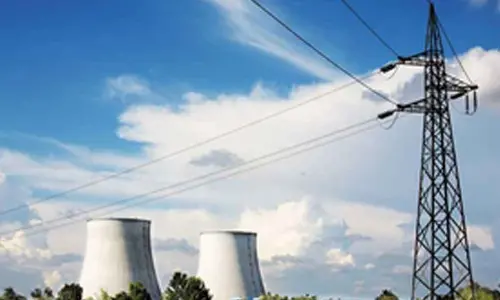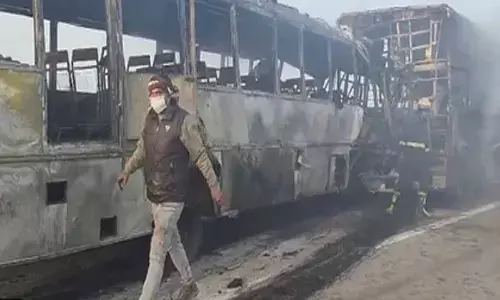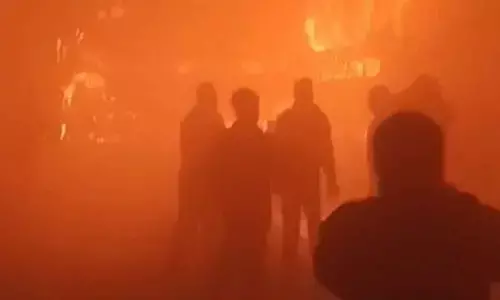How Hindus nos. declined in Kashmir

In 1999, NHRC stated the violence against the community was genocide-like
As the debate rages on the decline of the Hindu population, the exodus of the minority community from Kashmir is a case for study.
For the present-day generation, it may come as a surprise to know that Kashmir was once a Hindu land. Great emperors like Lalitaditya Muktapida ruled the Valley. Kashmir was also a seat of learning. Sharada Peeth established by Kashmiri Pandits was on par with Nalanda and Takshila. However, the decline started with the advent of Islam in the Valley in the 14th century.
After continued persecution which continued till 1948, the divided Valley was left with about six per cent Kashmiri Pandits. Over the decades, this percentage gradually decreased. Pandits moved to other parts of India due to discriminatory policies and attitudes of the governments in the state administration and political class which was shielded by Article 370.
Till late 1980s, the population had come down to almost two per cent. In February 1986, organised attacks were carried out against the Kashmiri Pandits in Anantnag district. Many houses were looted and temples burnt. This was followed by a full-blown terror onslaught the target of which was the Kashmiri Pandit community which everyone perceived to be pro-India.
The minorities were ruthlessly attacked. It was during the tenure of Farooq Abdullah, who became the Chief Minister on November 7, 1986 (till January 18, 1990) that Kashmir witnessed organised attacks on Kashmiri Pandits. The Home Minister of the country was Mufti Mohd Sayed, a Kashmiri Muslim who was largely suspected by the community to be behind the 1986 Anantnag riots. Hundreds were killed, many kidnapped, women were abducted and raped. Many were brutally killed and bodies hung from trees and poles. Mosques were openly used to carry out anti-India and anti-Hindu agendas. Loudspeakers atop mosques would blaze slogans against the Kashmiri Pandits. As targeted violence was unleashed on minorities, there was no one to help them or stand for them. Threats were openly given in local vernacular newspapers; posters were pasted on Hindu homes and hit lists were released.The Pakistan-backed ecosystem openly gave only three options to the Kashmiri Pandits – convert, face death or flee. The community chose to flee, leaving movable and immovable properties, temples and shrines, treasured books and archives.
What happened to Kashmiri Pandits is termed as mass migration as if the community people willingly left their homes to live in tents in hot humid conditions.
While the victims knew who the attackers were, the police, administration and the political class had just shut their eyes to the plight of the Kashmiri Pandits. They were probably following the plan to a perfect execution, which was done meticulously. The ecosystem was so strong and well organised that it challenged the country’s secular ethos and converted the Muslim-majority Kashmir into almost a ‘Hindu-free’ place in the 1990s. The political class that existed in the Valley when the Kashmiri Pandits were being persecuted continues to be there today as well. They remained silent in those times and have till today not sought justice for fellow Kashmiri minorities. There has been no SIT or judicial commission to probe the persecution and the exodus. The only time the country’s justice system mentioned the tragedy of the community was during the trial of JKLF chief Yasin Malik. The National Investigation Agency (NIA) told a Delhi court in 2022 during arguments on the sentencing of Yasin Malik in a terror funding case that he was responsible for the Kashmiri Pandits’ exodus from the Valley.
On June 11, 1999, the National Human Rights Commission (NHRC) in a ruling stated that the violence against the community was genocide-like and stopped short of terming it as genocide.
The Supreme Court too dismissed petitions seeking a probe into the alleged mass murder of Kashmiri Pandits in the valley in 1989-1990. However, a judgment authored by Justice Sanjay Kishan Kaul on the abrogation of Article 370 in 2023 did mention the ordeal of the community and recommended a structural investigation of the events and a Truth and Reconciliation Commission to rebuild the social fabric and heal wounds. Today, the same community is struggling to keep alive its culture, language and traditions. The faceless ecosystem that worked to uproot the Kashmiri Hindus from the Valley is today sitting pretty, somewhere unidentified and scouting for new lands.














